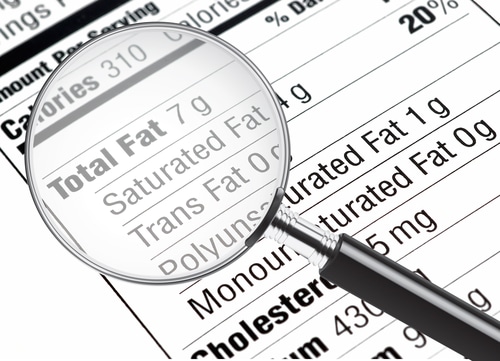 When you go to the grocery store, does it take an hour or more because you stop to read evry label? If you’re trying to controlling your weight, that’s a good thing. According to a new study, shoppers who read labels are thinner than those who don’t give labels at the supermarket a second glance.
When you go to the grocery store, does it take an hour or more because you stop to read evry label? If you’re trying to controlling your weight, that’s a good thing. According to a new study, shoppers who read labels are thinner than those who don’t give labels at the supermarket a second glance.
Do Label Readers Have an Advantage?
A recent study using data from the U.S. National Health Interview Survey looked at the grocery shopping habits of more than 25,000 people and compared it to their body weight. They were particularly interested in how many read labels when they shopped for groceries. What did they find? Among women, there was a strong link between label reading and body weight. Women who read labels when they shopped at the supermarket were, on average, 9 pounds lighter.
There were other observations as well. Label readers were more likely to be educated, to live in urban areas and not smoke – hardly surprising conclusions. Still, even conscientious, educated people admit to being confused about what all of the information on a nutritional label means. One survey showed that people feel more comfortable filling out their taxes than they do deciphering a nutrition label. Most shoppers still make their food choices based on taste rather than nutrition.
Food Label Trickery
Don’t place too much importance on what’s on the front of a label. Many shoppers are lured in by claims of “low fat,” “natural, “gluten-free” and sugar-free, assuming this means a product is good for them. Food manufacturers hope those words jump out at you so you’ll drop an item into your shopping cart without looking closely at the nutritional data. There’s a reason nutritional information is so fine in print.
Don’t Forget to Read “Restaurant Labels” Too
Digging deeper into nutritional data isn’t just important when you shop at the grocery store, it’s critical if you want to eat out and end up with a halfway healthy meal. Fortunately, more chain restaurants are publishing nutritional information that you can access online. It’s better to plan your order before you reach the restaurant so you’re not so famished you make an “impulse purchase” as many diners do. You can do this by reading the menu online and looking at the available nutritional information. Restaurant descriptions are written to make an item sound tasty and less unhealthy than it actually is. The only way to really know what you’re getting is to check out the nutritional data beforehand. Who would have thought a turkey burger at one popular sit-down restaurant would have 741 calories?
How Not Reading Labels Can Work in Your Favor
When you eat a clean diet that emphasizes fruits, vegetables, and lean, unpackaged protein sources, there isn’t a label to read, and you don’t have to worry about added sodium, preservatives, artificial colorings, trans-fat or MSG. You can uncomplicate your life by choosing more whole foods that don’t come in a package. It’s one of the best ways to stay healthy and control your weight – combined with exercise, of course.
The Bottom Line?
It pays to read labels and access nutritional data before adding something to your dinner plate, but there’s an even smarter alternative – eat more whole foods.
References:
Agricultural Economics 2012 doi: 10.1111/j.1574-0862.2012.00586.x
Food Processing Magazine. July 2012. “Americans Are Confused”
Medline Plus. “Shoppers Who Read Food Labels Are Thinner, Study Says”
Related Articles By Cathe:
Can You Trust Restaurant Nutritional Information?
5 Food Label Deceptions to Watch Out For
Nutrition Confusion: How Many People Really Read Nutritional Labels?

